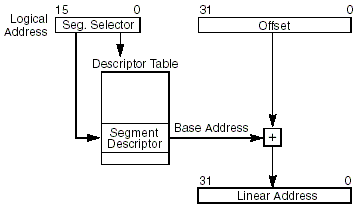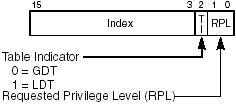

Segmentation is a Memory Management technique in which memory is divided into variable sized chunks which can be allocated to processes. Each chunk is called a segment.
A table stores the information about all such segments and is called Global Descriptor Table (GDT).
A GDT entry is called Global Descriptor. It comprise of :

To translate a logical address into a linear address, the processor does the following:
Uses the offset in the segment selector to locate the segment descriptor for the segment in the GDT or LDT and reads it into the processor. (This step is needed only when a new segment selector is loaded into a segment register.)
Examines the segment descriptor to check the access rights and range of the segment to insure that the segment is accessible and that the offset is within the limits of the segment.
Adds the base address of the segment from the segment descriptor to the offset to form a linear address.

If paging is not used, the processor maps the linear address directly to a physical address (that
is, the linear address goes out on the processorís address bus). If the linear address space is
paged, a second level of address translation is used to translate the linear address into a physical
address.
A segment selector is a 16-bit identifier for a segment. It does not point directly to the segment, but instead points to the segment descriptor that defines the segment. A segment selector contains the following items :


